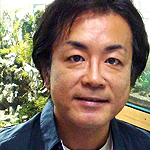
WELCOME TO THE OFFICIAL PAGE OF THE INTERNATIONAL BIOTOPE AQUARIUM DESIGN CONTEST – BADC2018
When taking part in this unique project, you contribute to promoting biotope aquaria and help learning harmony, from nature. When doing your fascinating research on a biotope of freshwater aquatic organisms, you show the beauty of the underwater world and at the same time draw public attention to the problems that threaten the ecology of natural waterbodies.
Prize pool: € 3,000 + diplomas + certificates + magazine
Accepting entries: September 1st – 30th
Evaluating entries: October 11th – 31st
Results: December 1st
All contestants should provide a video of their biotope aquaria.
MAGAZINE:
After the contest a commemorative catalogue will be issued with all the contest aquaria, as well as several informative articles devoted to biotope aquaristic. Your aquarium can be published there!
The catalogue will be presented to 10 top participants and the members of the jury.
You can get inspiration in the works of the previous contest, by purchasing the 2017 edition for only $ 10 including delivery by post. You can pay via PayPal.

Ivan Mikolji
Venezuela
When I was a kid, my father and I used to keep Siamese fighting fish, Mollies, Ram cichlids and Eel loaches all together, in the same tank. We filled the aquarium with coloured sand, bleached corals and plastic plants. Boy, it all looked so great back in the day! Back then the hobby was a very small circle consisting of my father (who paid), me and the pet store. Today things have gotten a lot more interesting. I am now part of a bigger circle, consisting of an uncountable number of hobbyists worldwide, like you. We still visit the store for gear but look for knowledge and answers elsewhere, online, in books, in nature, like scientists. Together we are creating a new path that is leading us back to the origin of where all of our plants and animals come from. Haven’t you all realized this? I am proud to see so many of you participate and honoured to go along with you all in this cool ride. This year we had a record of 105 biotope tanks registered. This inspires me; being a part of something that is like a plant or animal, alive and growing. I salute all the participants, judges and specially the organizers and sponsors of such an important event.

Michael Salter
Canada
Over the years, I’ve watched as the Biotope Aquarium Design Contest has grown and evolved. When it began there were fewer entries, and some could not really be called biotopes. Many had to be disqualified for having themes that were too broad, like “South American”. But as the winners set the bar, more and more people from more and more countries entered every year and we began to set ultra-realistic biotopes from Mexico, Russia, Taiwan, and many other locations, often based on local habitats from firsthand experience. Each year we were surprised with more outstanding and original biotopes. There were some disagreements along the way that sparked healthy debate on what the true meaning and requirements of a biotope should be. Is it cruel to have a resident prey population, or natural? How important should aesthetics be? How sustainable should the system be? These questions have reshaped the judgment criteria profoundly. This year was more difficult to judge than any other due to the high number of truly exceptional biotopes. There were number of never-before-attempted habitats represented, with unusual inhabitants like crayfish, pipefish, and amphibians. It’s exciting to see that this passion to craft true biotopes is spreading and progressing.

Mert Aykuta
Turkey
The biotope aquarium is a really important part of this hobby, for me the most important. The basic aim of this hobby is to train and nurture living aquatic organisms. For this reason, we must provide perfect conditions for these organisms. To do this, we first need to know well the natural habitats of these organisms. Every year Biotope Aquarium Design Contest is supporting and motivating people which are interested in biotopes. Everyone around the world is learning new information of habitats they don't know every year with this contest. This is really important attempt to develop biotope aquaristic. This year I am very pleased with the participants. I just need to say, I saw aquascaping style in some biotopes. They seem amazing but a little bit far from naturalness. Please note that visual beauty and naturalness must be balanced! Every year the contest is becoming more difficult, and this is really exciting. I can’t wait for next year. I have some advices for participants for next year. If you really want to finish this contest with good rewards, you need to care about these advices. - First you should choose little specific habitat you want to create biotope aquarium about. - You should choose specific title for your biotope. This title should describe the real habitat completely. - You should collect most correct information about this habitat (fishes, invertebrates, plants, materials, water parameters etc.) - Please be careful not to use prey and predators together. Otherwise this will reduce your points. - You should give us detailed and correct information about habitat and your aquarium. - To provide harmony of aquarium, you should choose materials you will use and colours of living organisms in best way. You should use every part of aquarium to give occupancy rate (this can change according to the habitat you choose, if a habitat has poor bottom, you should not use much materials). To use every region in aquarium you should choose correct fishes. - Your aquarium should not be overpopulated. Your aquarium should be suitable for size of fishes you feed. - Naturalness and visual beauty should be in balance. You should create natural aquarium, but at the same time every part of this aquarium should look perfect and clear. - You should spend enough time for taking photos and videos. This is one of most important parts of this contest. Capability of showing us what you created is important that much what you created. If you prepare good videos, we want to watch them until the end. If you take photos of all parts of your aquarium, we can see every detail. It means more points for you. - Please share every information sources. Information sources you share with us will be really important for us to evaluate your work. This will bring you more points. *Please do not forget. The aquarium you make must look as impressive, at least as important a real biotope is. Good luck for everyone next year!

Petra Bašić
Croatia
Everything that I have said last year needs to be repeated and emphasized throughout the years to come. This time I would like to thank the organizers of the contest for reaching new standards in promoting this wonderful niche in aquaristic hobby. With this contest and the beautiful work from the contestants hopefully it will grow up to be not a niche, but a fully recognized part of aquarium hobby in the world. Now, more than ever it is important to catch a glance of the natural habitats, intact habitats, as they are disappearing at enormous rate. The contestants, applying for the BADC, for sure have learnt some new things about the organisms that they wanted to present to us and also about their habitats, and that should be a lesson for all of us. Knowledge is the power, and the only thing that sticks to us for the rest of our lives. Unfortunately, some of the habitats at some point in time will exist only as pictures in this contest. Then, the knowledge and ecology will have to work together to make those habitats as they are supposed to be. I feel proud and honoured to be the one of the judges and as my friend would say: “Keep biotoping”!

Leo Angel
Israel
I like biotope aquaristics precisely because in addition to creating the aquarium itself, you need to select and study the place you want to display, learn its features, landscape, inhabitants, collect and systematize a lot of the most diverse information. In other words, before the creation of the aquarium itself it is necessary to do a lot of research. Understanding the life of the selected biotope, get used to the biotope, even to some extent merge with it. And after studying the biotope, you begin to look at the nature around you in a different way, you begin to feel the fragility of ecosystems, to understand the need to protect and preserve nature. Biotopes in aquariums not only teach their creators, but also give everyone interested in the natural environment a chance to touch a piece of real nature displayed in a given aquarium. But for a biotope aquarium to really get to the heart and make once again admire the beauty of nature, you should strive not only to create an aquarium as similar to the natural environment as possible for all the inhabitants, but to remember about the aesthetics. An aquarium is a live painting and you have to paint it according to the laws of beauty: the rules of composition, strong focal points, shadows and tones, all that make a painting a masterpiece. An aquarium is a school of beauty, but a biotope aquarium is also a school of nature. And Biotope Aquarium Design Contest is the real chance for aquarist to become not only a master in creating aquarium, but also to rise to a new level of knowledge about nature, the life around us, our life. Because we, too, are part of the biotope of planet Earth. I wish all contestants good luck, interesting biotopes and beautiful aquariums.

Alexey Malyshev
Russia
There are many areas in aquaristic. Biotope aquarium occupies a special place. Recreating natural waterbodies includes copying not only natural biotopes with similar natural decorations, water parameters and live fish and plants that live in a certain biotope together, but also best conditions for keeping and breeding fish. In the last few decades on the aquarium market, there is a huge variety of rare fish caught in nature, and they can not be called home fish. Savages can not adapt in a non-standard environment and live in constant stress. It is therefore recommended to create conditions in aquaria, similar to the waterbodies where fishes were caught (neighbors, decorations, plants). It is proved that wild-caught fish placed in a biotope aquarium start quickly feel at home, begin eating just 1-3 hours later and quickly feel better after a long quarantine and transportation. There were cases when fish spawned directly at the exhibition within a few hours after beibg put into an aquarium. In addition, biotope aquarium can be very beautiful. It is known that Nature is the best designer. Undoubtedly, the biotope aquarium competition contribute to the development of biotope aquaristic, and therefore, the conservation of many rare fish through acclimatization and breeding. Biotope Aquarium Design Contest is one of the most popular and largest, it has been held for several years.

Anton Lamboj
Austria
I am an aquarist now since more than a half of a century. Within this time I saw a lot of trends and ideas how to create a good looking aquarium. The so-called "Dutch-Planttank", the "Bonsai Aquariums", the "Nature Aquariums", or now the more recent one called "Aquascaping". All those have been or are for sure interesting, challenging and inspiring. Nevertheless, I think that what is going on here at BADC, to build up a tank like a natural biotope instead of creating something that comes out of the mind and the aesthetic thoughts of a human, is a very important trend, if not the most important one I met. Build up a tank that looks like the habitat of the organisms you want to keep and to show. In my eyes, this is much more than just a trend or creative moment going on. This is a valuable contribution and a piece of education in demonstrating how beautiful the natural world is. It can teach the one who is building up the aquarium, to look close what all is going on in a habitat, as well as it can teach the ones which are "just" looking at such an aquarium. How beautiful nature is without the influence of humans. It may hopefully help people to understand our world, at least the aquatic world, a little bit better. To recognize that even something, that may sometimes look on the first sight just like a bunch of leave litter or a bundle of plants with some insects in or some grey fish, has beauty. It may teach that all this has function. That all this together is forming an area of fascinating life. To increase the intention to value and to protect such environments. So I think a contest like BADC has much more meanings and values than just competition between participants. It has value to understand our planet in a better way, to understand life in a better way. And with this: To protect life in a better way. And I feel very honored to be judge for this contest, now the second year. I know that everybody which is participating will do a great job. Thank you all, and my best wishes for success.

Walter Vázquez
Argentina
The assembly of biotope aquariums is without a doubt the most complex but at the same time the most interesting branch of freshwater aquariums. But the complexity is not only based on the assembly of the aquarium itself, but on the guidelines that must be respected and taken into account when planning this type of aquarium. In this case, planning already needs more aspects to take into account that have to do with the correct assembly of the appropriate habitat; collect information on the area that we are going to recreate, from the surroundings of the area, such as the underwater environment, to which species inhabit the chosen biotope.This branch of aquarism forces us to constantly read, learn, and be deeply interested in what the species we want to maintain need. It teaches us that ecosystems must be cared for around the planet and more so that each one has at hand. We must understand the concept and the purpose and not take biotope aquarism as something else. So I think it is one of the most interesting branches, since it forces us to "evolve" constantly.

Víctor Ortiz
Mexico
Why are biotope aquaria so important? The aquaristic can be a very important step in understanding and conservation of aquatic species, because to get people interested in learning and protecting habitats and species, they must known first, what are they going to take care of. Biotope aquaria allow people to research those species of interest (fish, crustaceans, amphibians, etc.), without disturbing the habitat, so it became an important part of environmental education and environmental awareness. The same was in the case of Profundulus oaxacae, an endemic fish of the Valley of Oaxaca in Mexico, which was unknown to people, even forgotten for science. Scientists did not known many aspects of their basic biology. In a biotope aquarium their habitat was recreated as real as possible, so that people could see it, get interested and promote protection. Also when recreating their habitat we learned about their life and generated strategies for captive breeding and release into habitat, and to promote their protection. Today 2 years after recreation of their habitat in a biotope aquarium, P. oaxacae, commonly known as Oaxacan Killi, from unknown fish became world famous. Now we know many aspects of its life cycle, and it can be bred in captivity for conservation and - why not? - also to be introduced in the world of aquaristic. And now the work with new species is being started, those that have been neglected for a long time as live food, because to highlight their beauty and importance, they must be known, and that is where biotope aquaria play a very important role.

Jeremy Gay
Great Britain
I'm so glad that this competition goes ahead, and that it's reach spreads further through the hobby every year. For these are the real Nature Aquariums, the real aquascapes, the aquariums which are designed to replicate and mirror the natural underwater world, and ones which are designed to make our captive fish feel at home. For in biotope aquaria fish can live and behave as they do in the wild, the wild they have adapted and evolved over millennia to survive in, where every unique species of flora and fauna is niche, yet interconnected. Due to the internet and digital photography there has never been a better time to set up biotope aquaria. The great living explorers or native peoples can be contacted at the push of a button, and can instantly provide pictures and data for each habitat and its inhabitants. This data can be vital to helping us understand not only how to keep, feed and breed fish in captivity, but also why and how to protect their habitats in the wild. In order to create an accurate biotope aquarium it’s the detail that counts. Proper research will reveal not only the substrate and aquatic plant types, but also the terrestrial plants, which may also directly play their part by providing cover with their submerged roots but also indirectly, via fallen seeds, leaves and nuts. It’s the detail that will provide the answers as to why certain fish look or behave a certain way, or are prevented by reproducing in captivity as they do routinely in the wild. The detail matters when creating the perfect biotope. Water temperatures, chemistry, colour and decor can differ even between stretches of the same river, and each will be preferred and inhabited by its own intricately adapted, biotope correct species.

Dimitris Ioannou
Greece
Biotope aquaria are an apex of aquarium hobby. It is so easy, but so complicated to create a biotope aquarium, a picture, a little piece of nature in your home enclosed in a glass box. I like biotope aquarium because with the way we set up such an aquarium we offer to our fishes the most comfortable conditions and we try to create a real home for them, a home that they probably have not ever seen before as they were born in captivity. And when we put them in a proper one, they will immediately recognize that it is their home. Only then fishes will show us the most beautiful colours and their actual nature. But in order to succeed in this, we have to study a lot, to look, to ask. For all these reasons Biotope Aquarium Design Contest is a great opportunity to see many beautiful biotope aquaria together, and meet habitats that we did not know before.

Marta Mierzeńska
Poland
Aquaristic is a beautiful hobby, teaching us humbleness, patience and ability to observe. It allows us to calm down, think, forces us to search and to acquire knowledge. This is what I value most in this hobby. The flash of idea for a tank and the research phase, analysis of what will inhabit the aquarium, as well as what conditions are needed, the search of inspiration, information on the natural habitat of organisms. Hobby means acquiring knowledge, planning and thrill. In this day and age aquaristic oftentimes uses shortcuts, with chemicals being added to water, aiming at maintaining its purity and clarity, which has nothing to do with keeping the correct homeostasis in such a microhabitat. That is why I value biotope aquarium so highly, as it aims at imitating the environment, a piece of nature with its natural substrate, accumulating humus, elements of inanimate environment as well as living organisms. I invite you all to fulfill your aquarium dreams and to participate in the Biotope Aquarium Design Contest which has been organized for years. Show your passion, outcomes of research and knowledge acquiring. I wish you good luck!

Nathan Hill
Great Britain
To recreate a biotope accurately may be one of the hardest tasks an aquarist undertakes, but also one of the most rewarding. My own experiences in crafting a biotope to its finest minutiae resulted in aquatic behaviour and an ecosystem that I never imagined I would witness at home. An aquarium classic, Paracheirodon innesi, or the humble Neon tetra, became an object of abject fascination. By dusk, these fish would resort to a unique skulking and hunting behaviour, becoming tiny ambush predators that waited for passing ostracods before making their move. It was something I had never once witnessed in over 30 years of interacting with the species, and something I was proud to note that other biotope enthusiasts could recreate when they replicated my set-up in their own tanks. A biotope aquarium may represent fishkeeping in its purest form. As custodians of the fish we keep, we sometimes forget that our highest aim should be to keep them at their best — at their happiest. I maintain that the best way to do this is by providing the very conditions that they have evolved for. Fish are not a new product. Fish have evolved over millions of years to fit the niches of nature to perfection. Whether they have adapted to become predators, seamlessly blending in with substrates and foliage, or whether they have developed teeth that behave like rakes to pluck certain organisms from certain types of algae over certain rocks, fish are inextricably intertwined with their surroundings, and have been before the earliest humans learnt to walk upright. My Neon tetra taught me that when provided with the environment they know, fish will reveal their greatest evolutionary talents, the talents that they cannot show us in the bumbling, cosmopolitan cities that are community tanks. The Biotope Aquarium Design Contest invites participants to do exactly that. With each tank submitted, the aquarist strives to give us a glimpse of the hyper-reality that is a fish’s life. And with each tank submitted, we can hope to learn something new about the inhabitants. One tank at a time — one biotope at a time — we can only hope to unravel the complex and hitherto impenetrable world of advanced fish behaviour. Let fish be fish.

Piotr Kierzkowski
Poland
Biotope aquarium is a tank which imitates natural conditions in which our aquarium fishes live in the wild. Most natural underwater habitats do not look like brightly illuminated, densely planted aquascapes, supplied with CO2. In the wild there is a lot of mud and dead plant matter on the bottom (like leaves and twigs fallen from trees growing over the water), and light is often subdued, so plants can grow only close to water surface. Such environment may seem to be “dirty”, but this is not true. When skilfully arranged, biotope aquarium can be very beautiful. What is more important, however, is the fact that it also provides optimal conditions for the fishes, allowing them to fully express their natural, innate behavior. It's not only about water parameters, but also about careful selection of decorations, adjusted to the needs of a particular species (or set of species) of fishes. Doing a careful research before selecting a particular species of fish is important – to know where it comes from, and what exactly are its requirements. Fine sand, brown water and lots of debris on the bottom for black-water tetras and dwarf cichlids, stones and fast current for fishes living in streams, lots of shells for shell-dwellers from lake Tanganyika – all this makes our fishes feel truly at home. The master class of biotope aquariums is Biotope Aquarium Design Contest, organized every year. Aquarium designers from all over the world send photos of their tanks, along with detailed description of the natural biotope which they recreated in their aquarium. This allows to spread the knowledge about biotope aquariums, and to learn more about true conditions to which our aquarium fishes are adapted. Don't hesitate – apply for the contest, and give yourself a chance to win!

Roman Burkardt
Germany
Aquaristic is more than an aquarium in the living room as a furnishing item. Aquaristic is an exciting hobby that brings the underwater world home. We learn new things every day and try to get the best out of our aquarium. And here we are at Biotop Aquaristic. A wonderful way to confirm yourself artistically and creatively to get any ideas and suggestions we need shots from the rivers and lakes where our aquarium fish live. This is my goal. On my travels through North, Central and South America, I try to collect so much information and images from different habitats. This I put then for free and accessible to everyone on the Internet. The aquarists around the world can simulate different scenarios in their own aquaria. Over 40 years ago, the aquarium virus caught me and did not let go. Already as a 12-year-old I dreamed of exploring the rivers and catching ornamental fish in South America. 7 years later, my dream came true and I traveled as a 19-year-old boy to Venezuela. The more I traveled and visited the various habitats, the more I realized how important it is to make our aquaria biotope close. Therefore, it is my heartfelt wish to support this unique Biotope Aquarium Design Contest and I am very proud that I was appointed to the jury this year. I welcome all participants who participate with a lot of ambition and enthusiasm in the contest.

Takayuki Fukada
Japan
When everyone is young, you will have the experience of playing near the waterside. You should still be able to clearly remember the memories of that time. Unfortunately however, urban development has progressed everywhere now, and the waterside at that time is disappearing. The biotope aquarium can reproduce such precious watersides in your immediate surroundings and share its value with everyone around you. At the same time, it gives us the opportunity to trial and error in what kind of environment the organisms contained in your tank live in and how to reproduce that environment. These experiences lead to a better your understanding of ecosystem and to recognize the importance of the environment. BADC Contest is the best platform for presenting your passionate work on ecosystems and the environment. I hope that through this contest many people re-acknowledge the balanced natural beauty of the biotope aquarium. I believe that it should not be embellished or exaggerated, but it should be the pure beauty of nature. We judges are waiting for your confidence works, and show us your passion and values for the biotope aquarium. Pray for your success!

Heiko Blessin
Germany
Dear aquarium and biotope aquarium keepers, We are happy that biotope aquarium keeping is increasing all around the world! Many aquascaper switched to biotope scaping because it is much more challenging. You don’t just design a beautiful layout, but you have to combine beauty with natural facts and elements from the natural prototype! Biotope scaping starts already with your choice of a natural biotope: You need to google information and pictures. You have to find out, what fish, inverts and plants are living together – and this already is pretty difficult. For me, biotope scaping is the ultimate challenge in aquarium keeping – and it’s more fun than anything else! There is another important effect: I am involved in political discussions with animal right activists and the german government. The activists have no realistic knowlegement about aquarium fishes and inverts but they claim that aquarium are not suitable for fishes and inverts. With biotope aquariums you can stop them, because there is absolute NOTHING, what they can say against it! It is the most natural animal keeping in this world, sometimes even better than in the natural biotopes! Aquariums are defintily one way to enthusiast kids and people to protect our worldwide nature. Is there anything more important than this on this planet?

Yuriy Yancher
Ukraine
In my opinion, biotope aquarium is the root, fundamental type of aquarium. The first aquaria appeared in England and gradually spread throughout Europe. In fact, they were all biotope. In them there were fishes and plants exclusively from local water bodies. Aquarists of those times sought to create a home model of a natural body of water, to repeat what they had seen somewhere outside the city. Frankly speaking, they had no choice. Import of exotic fish did not exist yet, as well as special equipment. This encouraged hobbyists to study the characteristics of ecosystem of their regions deeply. Today popularization of biotope aquarium is very important. It broadens mind, makes to google, to analyze, to compare received information. The study of habitats is the key to keeping and breeding of problem species. Many incorrect stereotypes associated with keeping fishes are in the past now. For example, for a long time it was thought that most killifishes need old water with a few water changes and a slow flow. Thousands of aquarists had fails, following these rules. The study of the habitat of these fishes indicated that the period of active growth and maturation of these fishes is during the rainy season. So, there should be frequent water changes. Unfortunately, aquarium owners often do not pay attention to fishes and plants of their area. They may seem to them not so colourful or too common. But those aquarists who took chance to go with a hand net to a local pond and catch a fish, choose plants, rocks, sand, they begin to learn fishes of their region more carefully, to take care of native nature, to protect it.


